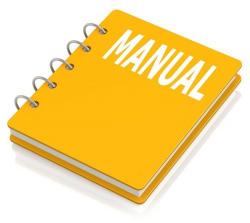Toyota HiAce 1989-2016 Factory Service & Shop Manual
Catalog:
Model:
Complete workshop & service manual with electrical wiring diagrams for Toyota HiAce 1989-2016. It's the same service manual used by dealers that guaranteed to be fully functional and intact without any missing page.
This Toyota HiAce 1989-2016 service & repair manual (including maintenance, overhaul, disassembling & assembling, adjustment, tune-up, operation, inspecting, diagnostic & troubleshooting…) is divided into different sections. Each section covers a specific component or system with detailed illustrations. A table of contents is placed at the beginning of each section. Pages are easily found by category, and each page is expandable for great detail. The printer-ready PDF documents work like a charm on all kinds of devices.
EXCERPT:
HIACE / TRH20#,213,22# KDH20#,212,22# LH20#,212,222 (RM04Z5E)
ELECTRONIC CONTROLLED AUTOMATIC TRANSMISSION SYSTEM > MECHANICAL SYSTEM TESTS
for Preparation Click here
PERFORM MECHANICAL SYSTEM TESTS
Measure the stall speed.
The object of this test is to check the overall performance of the transmission and engine by measuring the stall speeds in the D position.
NOTICE:
Perform the test at the normal operating ATF (Automatic Transmission Fluid) temperature 50 to 80°C (122 to 176°F).
Do not continuously run this test for longer than 5 seconds.
To ensure safety, do this test in a wide, clear level area which provides good traction.
The stall test should always be carried out in pairs. One technician should observe the conditions of wheels or wheel stoppers outside the vehicle while the other is doing the test.
Chock the 4 wheels.
Connect an intelligent tester to the DLC3.
Fully apply the parking brake.
Using your left foot, keep the brake pedal firmly depressed.
Start the engine.
Shift into the D position. Press all the way down on the accelerator pedal with your right foot.
Quickly read the stall speed at this time.
Stall speed (1KD-FTV):
2,110 to 2,410 rpm
Stall speed (2KD-FTV):
2,050 to 2,350 rpm
Evaluation:
Test Result
Possible cause
Stall speed is lower than standard value
Engine power output may be insufficient
Stator one-way clutch is not operating properly
HINT:
If the value is less than the specified value by 600 rpm or more, the torque converter could be faulty.
Stall speed is higher than standard value
Line pressure is too low
Forward clutch slipping
No.2 one-way clutch not operating properly
O/D one-way clutch not operating properly
Improper fluid level
Measure the time lag.
When the shift lever is shifted while the engine is idling, there will be a certain time lapse or lag before the shock can be felt. This is used for checking the condition of the direct clutch, forward clutch, and 1st and reverse brake.
NOTICE:
Perform the test at the normal operating ATF (Automatic Transmission Fluid) temperature: 50 to 80°C (122 to 176°F).
Be sure to allow for a 1 minute interval between tests.
Perform the test three times, and measure the time lags. Calculate the average value of the three time lags.
Connect an intelligent tester to the DLC3.
Fully apply the parking brake.
Start and warm up the engine and check idle speed in N position and A/C OFF.
Idle speed:
700 to 800 rpm
Shift the lever from the N to D position. Using a stop watch, measure the time from when the lever is shifted until the shock is felt.
Standard value:
D position time lag is less than 0.7 second
In the same way, measure the time lag for N → R.
Standard value:
R position time lag is less than 1.2 second
Evaluation:
Test Result
Possible cause
D position time lag exceeds standard value
Line pressure is too low
Forward clutch worn
O/D one-way clutch not operating properly
R position time lag exceeds standard value
Line pressure is too low
Direct clutch worn
1st and reverse brake worn
O/D one-way clutch not operating properly
…





